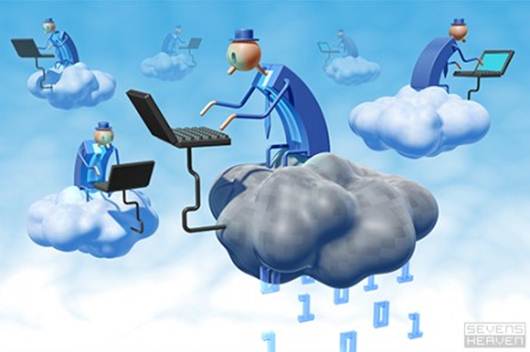Cloud computing has generated a lot of
misconceptions. Listed here are the top most wrongly described roles of the cloud.
Enterprises are seeing
a clear and deliberate shift from the
PC era to the cloud era. While the cloud
represents a new way for IT to
deliver and end users to consume - IT
applications and services, this
transition also represents a significant change in how applications, services and systems are defined.
The move to cloud computing is perhaps the most important technology disruption since the
transition from mainframe to
client-server. Indeed, it is the one change
that will define the next generation of IT.

Top
five things the cloud is not
As it is, the movement towards cloud computing has been in play for the last decade. Even so,
there continues to be a lot of
(mis)information in the marketplace
about the cloud. It is thus difficult for organisations to figure out what is real and what is not to help them develop a successful cloud
strategy or simply learn about
technologies that have been specifically
designed and purpose-built to meet this dramatic shift in technology. While it is critical to know what the cloud is, it is just as important to
understand what the cloud is not.
1. Cloud is not a place
People often talk about moving to the cloud as if they were moving to another city. However, the cloud is not a place. In fact,
the cloud can be anywhere, in your
data centre or someone else’s.
Organisations that believe they are moving to a strategy that leaves legacy apps and systems behind are in for a rude awakening. The single most
important way for businesses to
prepare themselves for the cloud is
to understand that the cloud is a more agile, efficient and cost-effective way of delivering, consuming and adopting IT services. By looking at the cloud
holistically, organisations can
optimise its benefits for their budgets,
privacy needs, geographies and work flow.
2. Cloud is not server virtualisation
Despite what many believe, the cloud is not the same as next-generation server virtualisation. It is not true that by virtualising your data centre, a private
cloud is created. On the contrary,
that is a gross exaggeration of a
description for cloud. There are some fairly stark differences between a server virtualisation environment and true cloud architecture. The former is a technique that allows you to run more than
one hardware platform, operating
system, storage or network resource
on the same hardware. The latter, meanwhile,
is the delivery of computing as a service rather than a product, whereby shared resources, software, and information are provided to computers and other devices as a metered service over a network. While virtualisation can be an important ingredient of the cloud, it is not always a requirement.
Google, for example, deployed a cloud
architecture that does not use server
virtualisation. Instead, a bare metal infrastructure is used.
3. Cloud is not an island
The debate on public clouds versus private clouds continues till today and it may feel as if enterprises must make a
wholesale decision on which way to
go. But the cloud is not an island,
it is not a place where one puts all of one’s IT services and then loses all interconnectivity and access. The right cloud strategy is one that enables you
to have a hybrid approach with the
ability to easily connect private and
public clouds. With companies now purchasing
cloud services from industry leaders despite already having their own cloud solution shows that the market is moving towards a more open,
interoperable multi-cloud
environment.
4. Cloud is not top-down
The cloud has upended the traditional IT approach to delivering services. With specific needs to get to market quickly,
functional business leaders are
consuming cloud services to avoid traditional
IT processes. Additionally, end users are also able to gain instant access to infinite pools of IT resources to help test out a new idea, get their
job done or even become more agile in
their daily work.
With consumerisation of IT driving this new movement, more often than not, users are already on the cloud and C-level offices are just now
trying to catch up. Those that
embrace this move, sooner rather than
later, will learn how to use the cloud as a strategic weapon before their competitors do. In fact, the cloud is a bottoms up phenomenon.
5. Cloud is not hype
As mentioned at the start, (mis)information may have slowed the progression
and adoption of the cloud for some
organisations. There are many
businesses as well as individuals who are still sceptical of the cloud and believe that it is something that is very far off into the future. The reality
is that the cloud is ready now.

Companies considering a move towards the cloud should take every opportunity to learn from
others who have already built highly
scalable, successful clouds. Built
correctly, cloud computing can deliver higher efficiency, limitless scalability and faster deployment of new services to the end-user, giving them the
ability to compete with established
cloud services, such as Amazon.